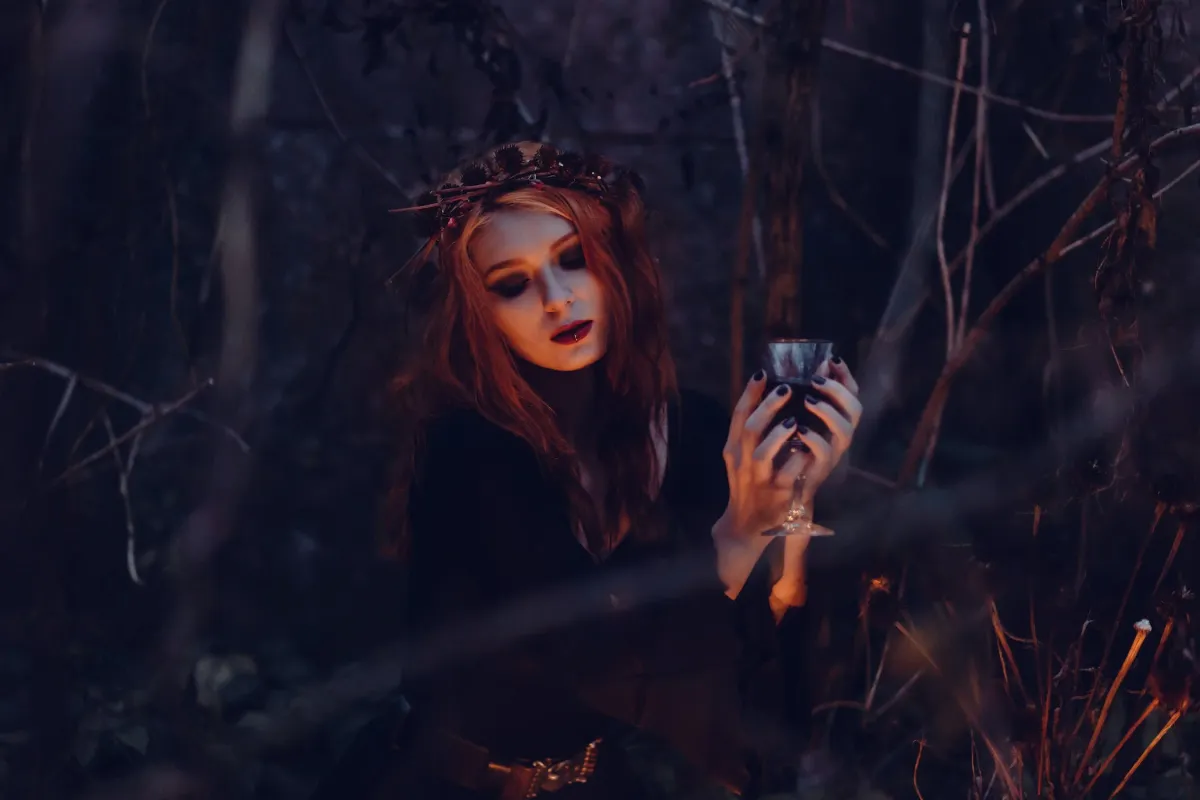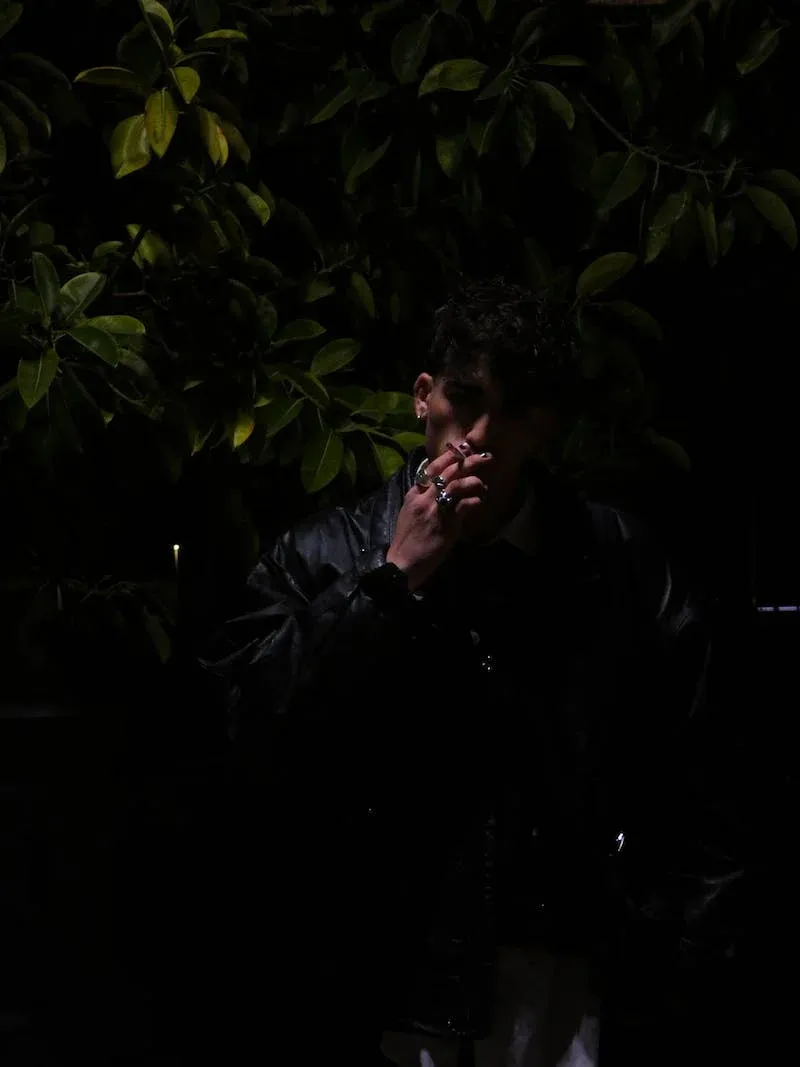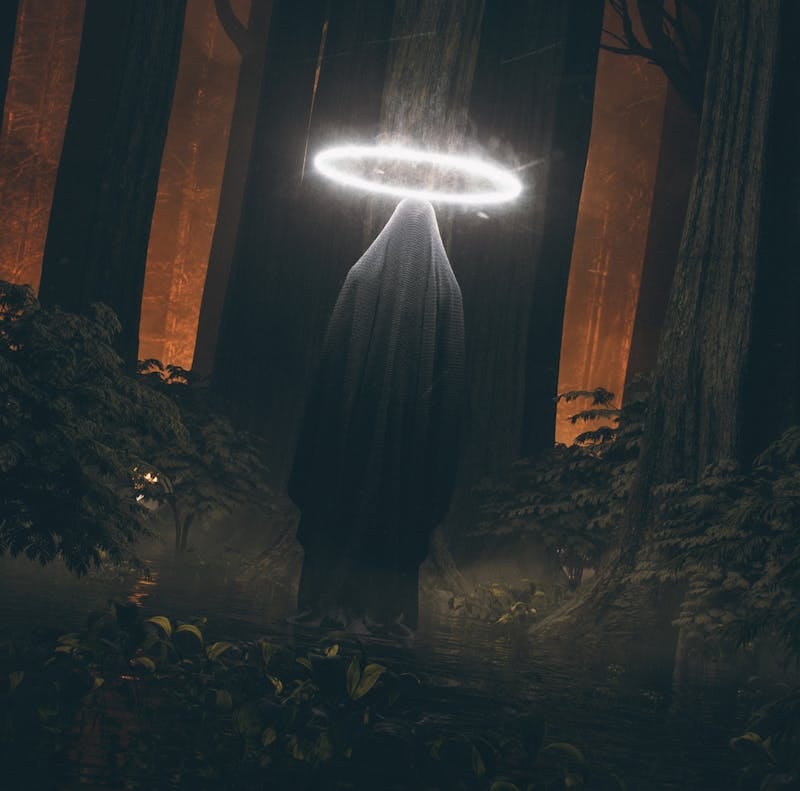Vampire: The Masquerade Clans
Vampire: The Masquerade, more than 30 years old by now, revolutionized the roleplaying scene in the nineties, spawning countless other game lines (Werewolf, Mage etc.) and quite a few variants, among them Dark Ages: Vampire and Victorian Age Vampire.

Despite a small setback in 2004, when the Revised (or 3rd) edition ended in the Apocalypse of the setting (Gehenna), Vampire is in its 5th edition today. 'V5', from a new publisher and with new authors, brought a lot of new developments and changes to the setting. In this article, we're going to cover the factions that are at the core of Vampire society in the VtM setting, the Clans. We'll try to cover the important stuff for the classic setting as well as for V5.
According to legend, it all started with Caine, murderer of his brother Abel and, cursed by God, the first vampire. Caine sired a second generation of vampires, who in turn sired the third generation into existence, the thirteen original vampires today known as the Antediluvians. Every Clan, and thus, every vampire, sources their origins back to one of these antediluvian progenitors, defining certain common characteristics among them. With time however, some of the Antediluvians were allegedly destroyed.
Banu Haqim (Assamites)
The Banu Haqim or 'Assamites' as they are often called (especially before V5) are a Clan that other vampires mostly associate with their professional and fanatic assassins, the source of the myths of the assassin sect in the near east during the crusades. Indeed, the children of the Antediluvian Haqim were based in Alamut, and under command of an individual called the 'Old man of the mountain'. The real Clan however is much more varied, with three different castes, of which Warriors are only one - the others being Visiers and Sorcerers. In the Middle Ages, Western Cainites that took part in the crusades came into contact with the Clan, and myths about Cainite assassins spread throughout Europe. Assamites traveling to Europe in turn were perceived as Low Clan. During the time of the Inquisition in Europe, the Assamites struck out and attacked the weakened European Cainites, diablerizing many of them, as their Path of Blood aspired to. The reaction was the Blood Curse: Both as a punishment as well as protection in the future, Clan Tremere magically cursed the Assamites, making Cainite Vitae poisonous to them. There were some unaffected Assamites though, and while the main clan, not joining the nascent Camarilla, sought to stay out of its sight, these Cainites joined the rising Sabbat movement, and especially their militant Black Hand subsect. The main Clan transcended the curse in 1998, when the Methuselah Ur-Shulgi, a direct childe of Haqim, awakened in Alamut from eighteen centuries of slumber. However, Ur-Shulgis rise caused a schism in the clan, as he predated Islam, the religion of many "younger" Assamites. Ur-Shulgi demanded the Clan to venerate Haqim alone. The schism caused many Assamites to leave the traditional near and Middle Eastern lands of the Clan, many even joining the Camarilla. In V5, these newcomers, which comprise almost the complete Vizier caste and many of the Warriors, have been formally recognized as part of the Camarilla in the Odense Pact.
Brujah

'The learned Clan' once was, despite its zealous temper, known to bring fourth scholars, warrior poets and philosopher kings. In modern nights, this reputation has all but eroded. The Clan stems from Troilus, the rebellious childe of the Antediluvian Brujah, and with time, his legacy began to show more and more. The Brujah once influenced the development of classical Greece and later tried to form a paradise for both Cainites and Kine in Carthago, although critics of the clan admonished that they were collaborating with the Baali, an ancient bloodline (or minor Clan) of Infernalists. Rome, and the alliance of Ventrue, Lasombra and Malkavians that controlled it, stamped this project out, and the Brujah never really recovered. Even today, many still harbor a deep resentment for the Ventrue clan. Due to their glorious history, the Brujah were still seen as a High Clan in medieval Europe's vampiric society, but the Clan's younger members continued to become more and rebellious and iconoclast. Many joined the medieval Furore or Promethian movements and later took part in the Anarch Revolt. The Clan itself joined the Camarilla, but many of the individual clan members became Sabbat antitribu instead, and the Brujah never ceased to practically be a synonym for 'Anarch', always fighting the status quo in favour of their respective philosophy. Today the Brujah are respected for their physical capabilites, but also seen as nothing but punks, rebels and common rabble. In V5, the Brujah Clan has left the Camarilla like the Gangrel before them and has almost completely joined the modern Anarch sect.
Cappadocians
The Cappadocian clan, reviled by other clans as 'Graverobbers', was always preoccupied with the study of death. The Antediluvian Cappadocius perceived the Embrace as a unique opportunity to learn the mysteries of death and unlife. In secret, Cappadocius became, adopting his own version of Christianity and after several visions, obsessed with the idea of meeting and then, diablerizing God. The whole Clan was shaped by him to serve this goal. It consisted mainly of scholars of the mysteries of death, practicing their 'Mortis' discipline, and was to a great extent, for Cainites, apolitical. In the Dark Ages, Cappadocians often positioned themselves as savants for Ventrue Princes, trading literacy and esoteric guidance for ressources for their experiments. They were regarded as a High Clan. In this time, the Clan admitted the Giovanni family, Venetian Necromancers, into their midst, which almost proved to be its undoing. In a 'coup de famille', the family's head Augustus Giovanni diablerized Cappadocius, taking his place as an Antediluvian, and started to systematically hunt down non-Giovanni Cappadocians. For almost six centuries, the clan was widely regarded as extinct, although rumours of alleged survivors like the Capuchin never disappeared, and in the modern nights, bloodlines like the Samedi or the Harbingers of Skulls became known in Kindred society. Apparently, the Giovanni had underestimated what it takes to exterminate a clan of experts on death... In V5, Cappadocians and their surviving offspring have become a bloodline of the Hecate clan.

Gangrel
The Clan of the Beast always consisted of wild men and women, vagrants and vagabonds, best known for Protean, the shapeshifting discipline, and their closeness to the wilds and its beasts. Early Gangrel history, passed on orally, was varied. Up until in the middles ages, they didn't share the origin myth of Caine, regarding themselves and their antideluvian, Ennoia, as fundamentally different from other, more civilized vampires. Some even claimed that Ennoia was the mother of the Romani, and sired both the Gangrel and the Werewolf species. Gangrel travelled with the Goths, Mongols and other itinerants and migrants. In Scandinavia, the Gangrel Methuselah Odin, central figure of the local Cainites or 'Einherjar', was worshipped by mortals as a god. Despite their individualistic nature, the Gangrel became one of the seven founding clans of the Camarilla in the 15th century, while other members joined the Sabbat and spawned the two different lineages of City Gangrel and Country Gangrel. In the modern nights, the Gangrel under their Justicar Xavier left the Camarilla, determined to return to the old ways as an Independent Clan. In V5, the Gangrel have joined the Anarchs, apparently happy with the Camarilla idea that anyone not part of their sect is an Anarch.
Hecata (~ Giovanni)
The Hecata are the newest clan in Vampire The Masquerade, and exist only in V5. At the core of the Hecata is the former Giovanni Clan, founded in the Middle Ages by Augustus Giovanni, who diablerized the Antediluvian Cappadocius after some of his family of Venetian merchants and moneylenders had been made part of the Cappadocian clan. For almost six centuries, the Giovanni were known as the Clan of Death, granting the Embrace exclusively to mortals from the Giovanni and certain other related families, like the Pisanobs, Dunsirns or Milliners. Few outsiders were invited into the families, so inbreeding was common. The Giovanni were an Independent Clan and known for their proficiency in Necromancy, as well as their influence on the world's economies and banks. In V5, the death (or disapperance) of Augustus Giovanni led to the 'Family Reunion', a conference between Giovanni, Cappadocian survivors, the Harbingers of Skulls and the Samedi, as well as the unrelated Nagaraja. What connected all these groups were necromantic Disciplines. Thus, the Hecata, the new Clan of Death, was born.

Lasombra
The Lasombra are a Clan of dark nobility, also known as the Clan of Shadows or the Night Clan. They are mystically tied to the primordial Darkness, with which they interact with their characteristic Obtenebration Discipline. They were one of the three most powerful Clans in ancient Rome, and, always a Clan connected to the sea, retained their power base around the Mediterranean after the fall of the Empire. The European Lasombra concentrated their power in the church, and the Clan's culture became deeply shaped by this relationship. Led by their Antediluvian in Sicily, the Lasombra were a High Clan in the middle ages and forged their own realm in the Long Night and the War of Princes: The Sea of Shadows. According to Clan legend, it was the diablerie of the Antediluvian Lasombra by one of his own children that started the Anarch Revolt, and only a handful of Lasombra joined the Camarilla as Antitribu after its end, while the bulk of the remaining Clan founded the Sabbat movement with the Tzimisce. Many elements of Sabbat Culture, like the mocking use of church titles, stem from the Lasombra. They stayed the most influental of the Sabbat Clans for five hundred years. In V5, the Lasombra clan has taken quite a turn after the beginning of the Second Inquisition and the Gehenna Crusade. The Amici Noctis, the secret rulers of the Clan, sought diplomatic dialogue with the Camarilla, and asked for nothing less than a place in the Organization for Clan Lasombra. The price was expectedly high - any Lasombra with the rank of Cardinal in the Sabbat was destroyed as a gesture of good faith, and any Lasombra seeking Camarilla recognition had to deliver a vampire older than themselves with a stake through his heart.
Malkavian
The enigmatic Malkavian Clan is defined by the Clan's weakness - every Malkavian is incurably insane. The spectrum of insanity ranges from things like mild paranoia or panic attacks to a mind completely separated from reality. In this insanity, though, there sometimes seems to be an understanding of the world and of metaphysics that surpasses any result of rational thought. Malkavians seem, to a certain degree, also have something like a shared consciousness, in modern times called the "Madness Network" (but also known by many other names in the Clan). Malkavians are also notorious for playing pranks on other Vampires. Treatment of Malkavians (not in the medical sense, which is impossible) has been varied through the ages. In antiquity, Malkavians were valued as seers or oracles. In medieval Europe, they were despised as a Low Clan. In the modern nights, despite the Chaos that oftes comes with them, Clan Malkavian is known to be one of pillars of the Camarilla.
The Ministry (~ Followers of Set)
The Antediluvian progenitor of this Clan, Set, was revered as a Egyptian god. The Followers of Set since that time can't agree on whether Set was one of the descendants of the Second Generation or if their lineage is something entirely different from other Vampires. Then again, the Followers of Set don't place any value in concepts like truth. According to their religious Clan philosophy, Set stands opposed to the false, material world. The soul needs to shed any doctrin, habit or craving to become truly free. Only to experience the crassest acts of corruption can liberate the soul. Benevolent as they are, the Setians seek to free as many souls as possible by spreading drug abuse, vice, greed and all that other great stuff, and undermine religions, law or conventional morality, as they strengthen order and structure. When the Camarilla and the Sabbat were founded, the Followers stayed independent. In V5, the Followers of Set's home lands in the Middle East were invaded by the Sabbat's Gehenna crusade. The Followers tried to join the Camarilla to find support among other Kindred, but were refused. Many of the Followers joined the Anarchs instead, and the Clan rebranded itself as The Ministry. There are no "Followers antitribu" in the Sabbat per se, but a heretical variant of the Followers practicing voodoun exists in the Sabbat, the Serpents of Light.
Nosferatu
Clan Nosferatu, the Clan of the Hidden (or sewer rats), is stricken by the Clan's weakness, something that sets them apart from any other Kindred: The Embrace of a Nosferatu turns the unlucky mortal into a hideous creature. The stereotypical Nosferatu resembles Count Orlok, but there are many variants. Absimiliard, the Clan's Antediluvian, sired two bloodlines: The first is the Nictuku, who were all bloodbound to him. The second bloodline, which the other Kindred know as the Nosferatu Clan, is descended from a fourth generation child of Absimiliard known as the Matriarch. Under orders of the Antediluvian, who didn't take this disobedience kindly, the Nictuku seek the extinction of the other Nosferatu. Other Vampires who are aware of the Nictuku usually don't take them seriously. But while they were long considered a legend, their existence is a fact in the modern nights. The Nosferatu have adjusted to their hideousness, as well as to being hunted by the Nictuku, by the becoming the unseen spymasters and information brokers of the vampire world. A lot of them live in shared lairs in the sewers (If you want to see one, play the PC game Bloodlines :-) ). The Nosferatu were seen as a Low Clan in the Middle Ages. Many lived with the beggars and outcasts of medieval society like lepers. They also had a connection to the leper knights of the Order of St. Lacarus. In the Renaissance, the Clan split between the Camarilla and Sabbat sects. However, the Camarilla Nosferatu are on pretty cordial terms with their Sabbat antitribu, sharing information and a mutual interest in the survival of the Clan.
Ravnos

The Ravnos are a Clan of Tricksters, Vagabonds and Deceivers. Kindred scholars say that their Antediluvian was a thief named Dracian, but the Ravnos themselves claim that their progenitor, named Zapathasura, was actually brought back to life to combat a race of fallen angelic beings (that might be identical with the Kuei-jin, the Eastern Vampires). They are deeply connected with their homelands on the Indian subcontinent, and few Vampires in the West know more than those Ravnos who, with the Roma and other itinerant cultures, traveled west to Europe. The Western Ravnos are actually heretics to the Clan philosophy, or Mayaparisatya, which is practiced in India. The Western Path of Paradox, the Path of Enlightenment that the Western Ravnos follow, encourages them to change what others perceive as reality and to disrupt social norms, which has given the Clan a very bad reputation. Consequently, the Ravnos were seen as a Low Clan of foreigners in medieval Europe. In 1999, during the 'Week of Nightmares', the Ravnos Antediluvian rose from his slumber in India. His awakening and apocalpytic death doomed the Ravnos, and the Clan fractured. There remain only few survivors.
Salubri
Saulot, the Antediluvian of Clan Salubri, was once known as a great healer among Kindred, and most beloved of Caine. He was a great mystic, and constantly concerned with overcoming the Beast inside himself. In search of healing for the Beast in Cainite nature, Saulot eventually traveled east, to learn at the feet of Hindu Gurus as well as the Kuei-Jin Arhat Xue. This way, Saulot achieved Golconda, the mystical state of enlightment in which a Vampire is no longer subject to the Beast. (Despite this success, for whatever happened in his student-teacher relationship with Xue, Kuei-Jin remember him as 'Zao-Lat the traitor'.) When he returned, Saulot bore a third eye, which would become the mark of his Clan. Saulots Childer were divided into the casts of Warriors, Healers and Watchers, with different weaknesses. Members were regarded mostly as peacemakers, but also as fierce fighters against enemies like the demonic Baali. In 1133 however, Saulot was diablerized by the former Mage Tremere, seeking legitimacy for himself and his childer as a 'real' Clan with a 'real' Antediluvian. A viscious propaganda campaign followed, and over the centuries, the Salubri became regarded as soul-devouring Devil Kindred that were hunted down, while the other Clans arranged themselves with the rising star of the Tremere clan. Only very few Salubri are left in the modern nights, among them the Salubri antitribu of the Sabbat, who are aiming to avenge their Clan and destroy the Tremere, as well as the Camarilla that supports the Usurpers.
Toreador
The Toreador are known as a Clan of artists and aesthetes, beings of great physical beauty who are still most connected to the mortal world. Their Antediluvian Arikel was a painter and sculptress in the First City. Once embraced, she created a mural depicting the past, present and future of the Cainite race. The terrible future that Arikel foresaw enraged Caine, and he cursed her and her offspring with the obession with art and beauty that has since then become the hallmark of the Toreador Clan. The Toreador were a strong influence on the first Greek high cultures. After the fall of Mykene the Toreador found support by Roman Ventrue as well as Carthaginan Brujah, but sided with the victors when the outcome of the Punic Wars became apparent. The Toreador in Rome often rivaled Ventrue and Malkavians. When the glory of Rome faded, the Toreador Methuselah Michael abandoned it for Constantinople, where he tried to build a Cainite utopia of learning and enlightment, which only ended with the Fourth Crusade in 1204. Other parts of the Clan migrated into the Francish kingdoms, where they founded the vampiric Courts of Love - in the beginning merely a societal movement fostering chivalry and courtly love, but later, feudal institutions that ousted Alexander, the Ventrue Prince of Paris, to place France firmly under the control of Clan Toreador. The Toreador were a High Clan in the Middle Ages, known for its painters, poets and minstrels. The Clan was one of the founders of the Camarilla, which would not have come into existence if not for the efforts of the Toreador Rafael de Corazon. In the modern nights, the Clan is still one of the Camarilla's most important supporters. The modern Clan is informally divided into Artistes and Poseurs, or 'real artists' and Toreador who merely belong to the artistic milieu, with the affiliation to either group a great source of slander and scheming.
Tremere

Clan Tremere is one of the most powerful Clans, an integral part of the Camarilla, feared for their command of blood magic. That being said, the Tremere are not one of the thirteen original Vampire Clans. Instead, what would become Clan Tremere started out as a house of hermetic Mages. The Archmages of the house realized that their magic was slowly failing, their immortality potions seizing to function. Tremere, the leader of the house, led his brethren in search of alternate means to achieve immortality. It was his pupil Goratrix who investigated vampiric blood, and devised an immortality ritual based on it. After the ritual's completion however, the leaders of the house had become vampires, no longer able to practice Awakened Magick, and newcomers to a race that hated them for the experiments they had conducted on Vampires of the Tzimisce and Gangrel Clans. The leading circle of the house slowly transformed all house members into Vampires while also looking for ways to get established in Cainite society. In 1133, Tremere diablerized the Antediluvian Saulot to gain legitimacy as a real Clan. The Tremere also started making allies with the Blood Sorcery they had developed to replace the Awakened Magick now inaccessible to them as Cainites. Being one of the founding Clans of the Camarilla Sect in 1435 finalized their entry into Vampire society as equals. Of course, it also established them as enemies to the forming Sabbat, among them Clan Tzimisce, which had never given up on destroying the Usurpers. The Tremere stayed 'alive' through their Blood Magic and through their rigid, blood-bond-secured internal organization, called the 'Pyramid'. In V5, the latter was shattered when the Second Inquisition destroyed the Tremere Prime Chantry in Vienna, with rival groups springing from the ashes.
Tzimisce
Few Clans are as feared as the Tzimisce. Many of them are classic vampires, dark, territorial fiends lording over remote estates or castles in Eastern Europe. Big parts of Clan culture revolve around sadism and torture. It's no surprise that Vlad Tepes, the origin of the Dracula myth, was one of their ranks. Among other Vampires, the Clan is mostly known as Flesh Shapers due to their Discipline of Vicissitude. Tzimisce regard mortals as clay at best, and modify their own appearance as well as that of their servants and victims. Results in the latter case vary from armchairs made of living flesh to giant war beasts like the massive Vohzd, created from several ghouls melded into one. According to legend, the Tzimisce Antediluvian himself was an experiment of Enoch, one of the second Generation childer of Caine, who wanted to concentrate all his bestial characteristics into one Embrace. The resulting creature eventually traveled to Eastern Europe, where Tzimisce became connected to the local demon Kupala. The center of the Clan was established in the Carpathian mountains. In the Middle Ages, the Tzimisce Voivodate, a loose confederation of Tzimisce domains, controlled most of Eastern Europe. A Clan as traditional and hierarchical as the Tzimisce however also brought forth many young vampires willing to join the First Anarch Revolt in the fifteenth century. These young Fiends introduced the secret of Vaulderie to the Anarch movement, a way to escape the loyalty-inducing blood bond that many Elders placed on their progeny. When the destruction of the Lasombra Antediluvian became known in Europe, the Tzimisce Anarch Lugoj started his own campaign to bring down the Tzimisce Antediluvian. With the ancient fiend apparently having met final death, most vampires of Clan Tzimisce were among the shapers of the fledgeling Sabbat, providing many rituals and dark secrets to the Sect. In the Sabbat, while the Lasombra often are Pack leaders, Bishops and Cardinals, Tzimisce often fill the spiritual roles of Pack Priests or Prisci.
Ventrue
The Blue Bloods, as the Ventrue are often called, regard themselves as the nobility of the Kindred and as their rightful leaders. According to the Clan's historians, the Antediluvian Ventrue was Caine's advisor and, when the first Vampire left his City, his appointed representative. The Ventrue lament the other Antediluvian's disobedience and incompetence in these prehistoric times, just like they lament the disobedience and incompetence of the other Vampires against their rightful rule today. Since the days of the First City, Ventrue have seized every opportunity to assume command over other Vampires - for their own good, or so the Ventrue assure. Most Princes are, and have been, Ventrue. The Roman Empire, which achieved much of its success under secret Ventrue rule, was a golden age for the Clan, but also saw their worst conflict with Clan Brujah in the Punic Wars, which spurred a rivalry that still exists today. In the Middle Ages, Ventrue controlled the Baronies of Avalon in Britain as well as the Fiefs of the Black Cross in the shadows of the Holy Roman Empire. The diablerie of the Ventrue Lord Hardestadt (the Elder) was the starting shot of the Anarch Revolt in the fifteenth century, and the formation of the Camarilla, which was decisively promoted by Hardestadt (the Younger, even though most vampires don't know that), brought it to an end and created new stability. Not all Ventrue joined the Camarilla though. While the main Clan, with times changing, moved on from siring human nobles to merchants and having money is an important part of clan status today, the Clan's antitribu in the Sabbat still regard themselves as knights and as valiant, if dark crusaders. Both parts of the Clan suffer from the same weakness though: They can only drink blood from a select group of mortals, like, for example, only virgins or only a certain nationality.

FAQs
What are the 13 Clans of vampires?
The 'classic' thirteen Clans are Assamites, Brujah, Followers of Set, Gangrel, Giovanni, Lasombra, Nosferatu, Malkavians, Ravnos, Toreador, Tremere, Tzimisce and Ventrue. These are not the only Clans existing in all of history, and some of the Clans have changed names or concepts in V5.
How many Clans are in Vampire The Masquerade?
Classically, thirteen Clans are accepted. The distinction between a real Clan and a Bloodline can be slippery, though.
What is the strongest Vampire Clan?
Before the Fall of Vienna in V5, probably the Tremere, who combined Thaumaturgy powers with a rigid internal structure. After that, and for long times in history, too, I'd wager on the Ventrue with their political and economic power.
What Clans are in Vampire The Masquerade V5?
In V5, the Clans are Banu Haqim, Brujah, Gangrel, Hecata, Lasombra, Nosferatu, The Ministry, Malkavians, Ravnos, Toreador, Tremere, Tzimisce and Ventrue.
What is the leader of a Vampire Clan called?
There's no 'real' leader, but the first vampire of a Clan is known as an 'Antediluvian'. In the Camarilla, Clans are (in theory) led by their representative in the Inner Circle.
Who is the youngest Clan in World of Darkness?
In the classic setting, the Giovanni. In V5, the Hecata.
What is the best Clan for beginners in Vampire the Masquerade Bloodlines?
Both Ventrue and Tremere have a good mix of social and martial Disciplines, so they offer a lot of options in the game. Don't play Malkavians or Nosferatu on your first playthrough, as their unique way of playing makes it practically a completely different game.
How many endings are there in Vampire The Masquerade?
You mean in 'Bloodlines'? Five - (Spoiler following:) You can side with the Prince, the Camarilla, the Anarchs, the Kuei-Jin, or just walk into the night as Autarkis.
How do you choose a Clan in Vampire Masquerade?
Your Storyteller will probably have an idea which Clans fit into their Chronicle. For example, if the game revolves around a Camarilla city, it doesn't make sense to bring a Tzimisce. Apart from that, you best take a look at the concepts that the Clans are embodying, and decide what appeals to you most. Don't base your decision on 'strong' Disciplines or other rules alone, as that tends to produce players too keen on outdoing each other. Player conflict can be part of a Vampire The Masquerade game, but it's by no means the only important thing.
Is Vampire The Masquerade Bloodlines unfinished?
Bloodlines, when it came out in 2004, was a mess. A very entertaining mess, but still incomplete and bug ridden. Since then, inofficial fan patches have been released which enable a lot of the planned features of the game and add some new stuff.
Who is the king of all Vampire?
No such thing in Vampire The Masquerade. Some might argue though, that Caine, the father of all (Western) Vampires could be called their king.
Who is the toughest vampire?
Spoiler from the 'Gehenna' book incoming! My bet would be on the Tzimisce Antediluvian which exists in modern times as a bodyless, part fungal mass under New York City.
What is the difference between Tzimisce and Lasombra?
They are the founding Clans of the Sabbat, but very different from each other. While the Lasombra tend to be leaders, Bishops and Cardinals, the Tzimisce form the spiritual backbone of the Sect as Pack Priests, Prisci etc. The Lasombra's weakness is that they don't have a reflection, the Tzimisce on the other hand need to surround themselves with at least two hands of earth, from a place important to them as a mortal, whenever they sleep. The Lasombra's signature Discipline is Obtenebration with which they manipulate shadows. The Tzimisce are known for their Vicissitude Discipline, shaping flesh.
Does God exist in Vampire: The Masquerade?
Very likely. Cainite mythology states that Caine, the first murderer, was cursed by God and became the father of Vampires. In the end, a lot of this mythology has been proven to be correct, at least outtime.
Who is the bad guy in Vampire The Masquerade Bloodlines?
Lots of spoilers incoming! As Rosa, the Thin Bloods Prophetess, states it: 'The man on the couch... the lone wolf... all others - tread carefully.' Every Vampire in the game, with the exception of Beckett (the lone wolf), as well as their Ghouls, with the exception of Mercurio (the man on the couch) is not to be trusted. Apart from that, the biggest schemers are probably LaCroix and Ming Xiao. Both are extremely power hungry and use any means necessary for their aim, LaCroix even intent on betraying the Camarilla. You can join both of them, but at least Ming Xiao is going to betray you in the end as well. So the bad guys in Bloodlines are probably LaCroix and Ming Xiao.

